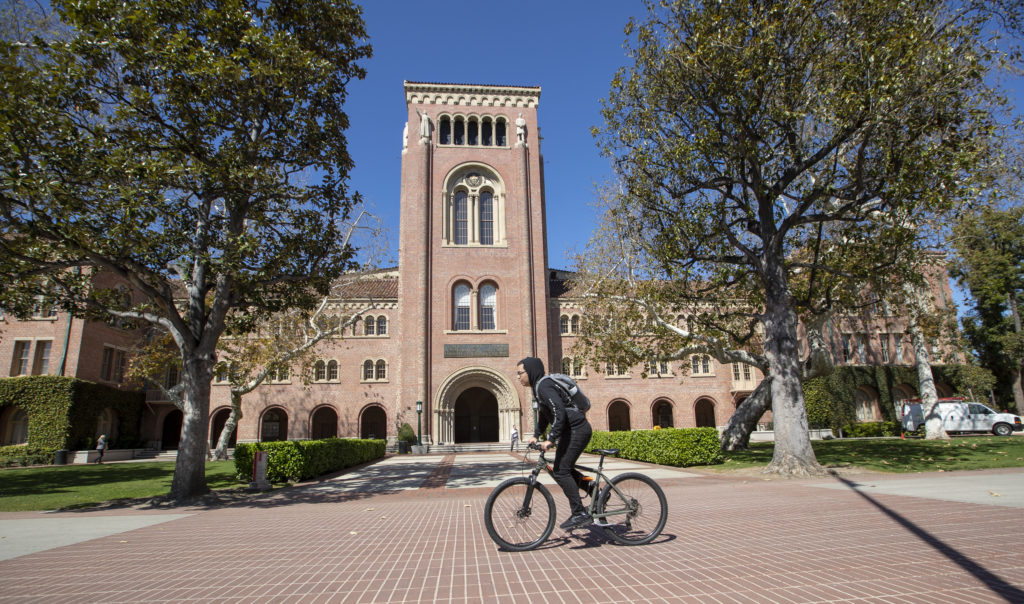Every Monday morning, artnet News brings you The Gray Market. The column decodes important stories from the previous week—and offers unparalleled insight into the inner workings of the art industry in the process.
This week, a look at higher education inside and outside the arts…
BILL OF WRONGS
On Tuesday, Renée Reizman at Hyperallergic reported on a protest held by students at the California Institute of the Arts (CalArts)—the prominent art school that counts Carrie Mae Weems, Jim Shaw, Sam Durant, and Catherine Opie, among other luminaries, as alumni—in response to news that annual tuition will balloon to $50,850 this fall. The demonstration took place outside Hauser & Wirth’s Los Angeles complex, where CalArts’ officials and trustees—gallery co-president Iwan Wirth is among the latter group—convened to approve the budget for the 2019–2020 academic year. According to Reizman, tuition accounts for about 75 percent of CalArts’ annual budget, and the price has escalated by almost $10,000 in the last five years.
In recognition of the students’ concerns, school officials did make a quintet of concessions. Reizman wrote:
In the five-point resolution, the board promises more transparent communication, to include more faculty, staff, and student voices in their decision making process, immediate reevaluation of financial aid packages for continuing students who demonstrate the most need, and future commitment to analyzing and improving the distribution of financial aid and need for increased tuition.
However, these shifts do relatively little to address the root cause of the students’ unrest—namely, the dizzying annual price of attending CalArts. Personally, I care much more about whether the school is going to keep firing a catastrophic debt bazooka at a bunch of students’ futures than about how tactfully those students are going to be notified that another, bigger shell is about to be loaded into the chamber.
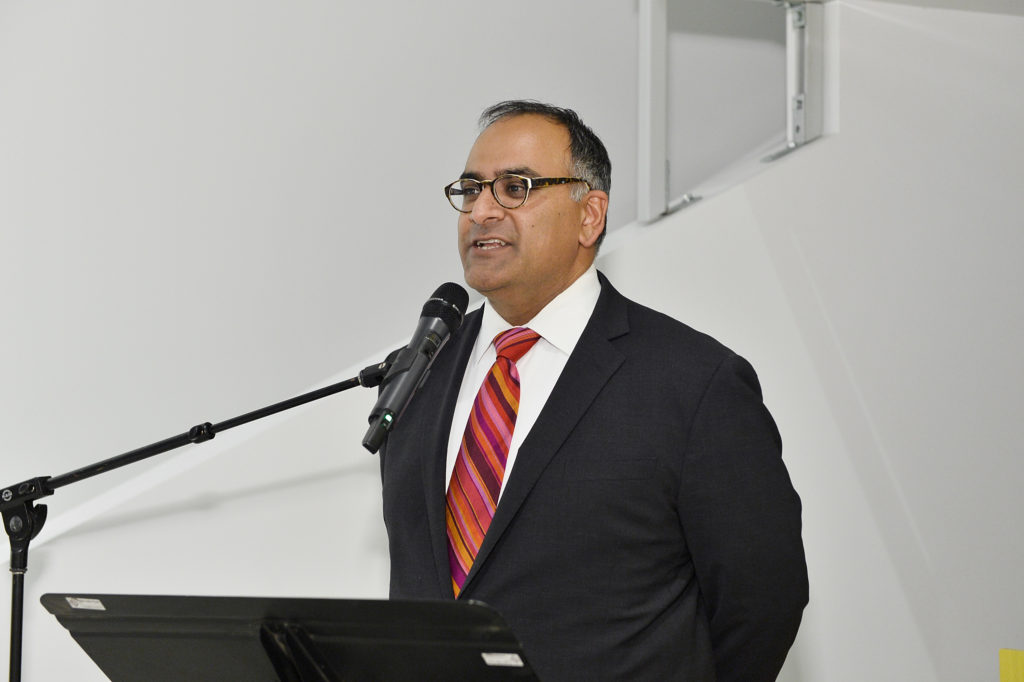
CalArts president Ravi Rajan at his inauguration in October 2017. Photo by Stefanie Keenan/Getty Images for CalArts.
This isn’t just an art school problem, though. The price of attending a four-year university has increased almost eight times faster than wages in the US since 1989. To his credit, CalArts president Ravi S. Rajan recognizes his school is both guilty in itself and part of a much larger crisis, based on his comments to Hyperallergic:
“Student precarity has been normalized not just at CalArts, but also the whole country,” he said, referring to the mounting student debt nationwide. “We talked about how CalArts says it is radical in how it’s a different school, but still it’s following the same status quo.”
Yet cost isn’t the sole impediment to getting a renowned education anymore, as another, much bigger story drove home last week. And on review, it also provided another crucial reminder of how linked the art world’s inequities are to the wider world.

The California Institute of the Arts. Photography by Bobak Ha’Eri. Image courtesy of Wikimedia Commons.
CRIMES AGAINST EQUALITY
On the same day the CalArts protesters rallied outside Hauser & Wirth Los Angeles, “federal prosecutors charged 50 people… in a brazen scheme to buy spots in the freshman classes at Yale, Stanford, and other big-name schools,” according to the New York Times. The dragnet (known as Operation Varsity Blues) caught 33 wealthy parents, including former Full House co-star Lori Loughlin, former Desperate Housewives actress Felicity Huffman, and rainmaker William E. McGlashan, Jr. of private-equity powerhouse TPG.
Through William Singer, the founder of a for-profit college-prep program, the parents paid bribes ranging from at least $50,000 to rig standardized test scores up to $1.2 million for college-sports coaches to portray underachieving children as scholarship-worthy athletes. In the most farcical cases, the scam involved administrators Photoshopping prospective students’ heads onto other high-school athletes’ bodies to build out fake competitive resumes.
The college-admissions sting shows that the problem with elite higher education isn’t just cost. It’s also exclusivity. Even students with the academic credentials and the theoretical willingness to pay—whether through loans or scholarships—won’t necessarily get into a good college or grad school because there simply aren’t enough spaces, especially when less deserving students’ parents can just buy spots on the black market. And of course, the scarcity of spots only drives the price of tuition (and, it turns out, bribes) higher.
To paraphrase entrepreneur, author, and NYU business-school professor Scott Galloway, American higher education has transformed from a public utility into a luxury product. According to Galloway, “the acceptance rate among the top 50 US universities fell 36 percent and declined even more among the top 10 universities (60 percent),” epitomized by acceptance rates of just four percent at Stanford and five percent at Harvard. Galloway also includes himself and his colleagues as part of the problem, writing about how faculty and university officials regularly “share their pride about how impossible it is to get into our institution.”
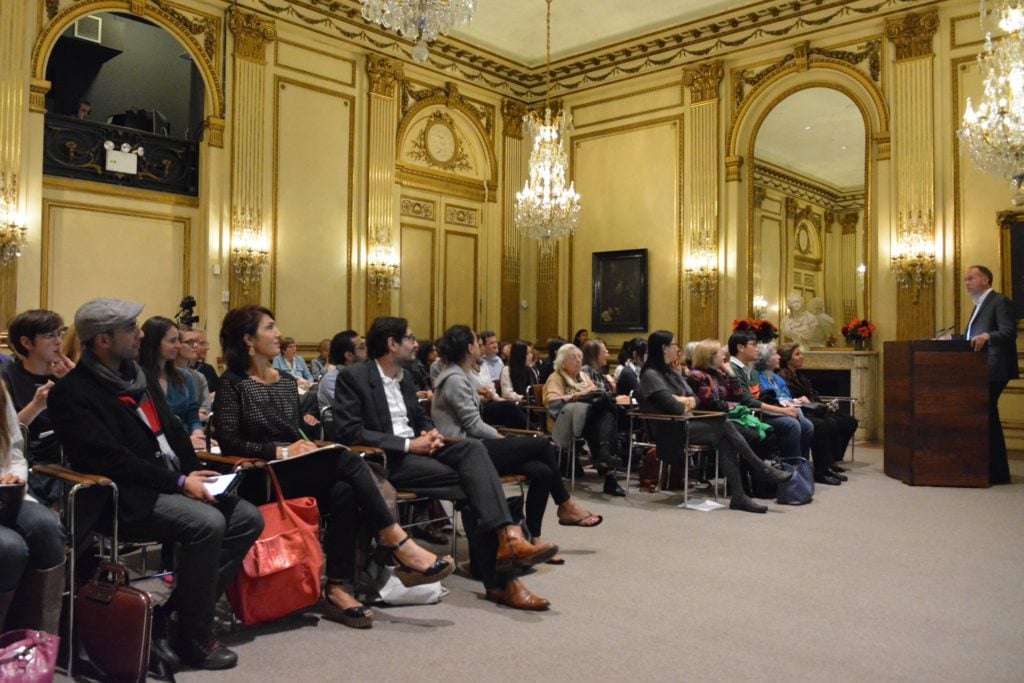
New York University’s Institute of Fine Arts. Courtesy of the Institute of Fine Arts, NYU.
Art school puts an even finer point on the issue. There, thousands of students effectively buy a stealth luxury product premised on exclusivity (an MFA) to give themselves the best chance at a career of… producing stealth luxury products premised on exclusivity (artworks in the gallery system). The snake eats its own tail.
I don’t say any of this to trivialize the intentions of young artists (most of whom I believe are genuinely trying to do work that matters) or art-school faculty (most of whom I believe are genuinely trying to help their students achieve that goal). I say it to highlight that good people can easily get trapped in bad systems. And it’s painfully clear at this point that designing a worse system than the MFA economy might take an actual con man.
Nowhere is this more apparent than in the recently announced MFA Fair, which will debut in November at New York’s Pier 36. The concept is simple: Up to 65 art schools will pay $10,000 to $20,000 each to participate in what is essentially a combined trade show and college fair. Their newest MFA grads will get to sell their works in booths, just like dealers at, say, the Armory Show, and the institutions themselves will get to pitch their debt traps—er, grad programs—to prospective students. Confirmed participants already include vaunted schools like Columbia University, Virginia Commonwealth University, and the Cranbrook Academy of Art.
The MFA Fair may represent the educational endpoint of the American art economy. On paper, it addresses artists’ urgent need to professionalize ASAP and art schools’ urgent need to replenish their supplies of fresh customers year after year. And it’s all for the same reason: Everyone needs the money worse than ever. But of course, the artists wouldn’t need the money so badly if the schools didn’t cost so much. So who is this helping more?
In theory, the MFA Fair at least makes the art economy somewhat more of a meritocracy, since artists can start to meet collectors and make sales without needing to penetrate the hyper-exclusive, frequently biased gallery system first. But even this idea is fiction, in more ways than one.
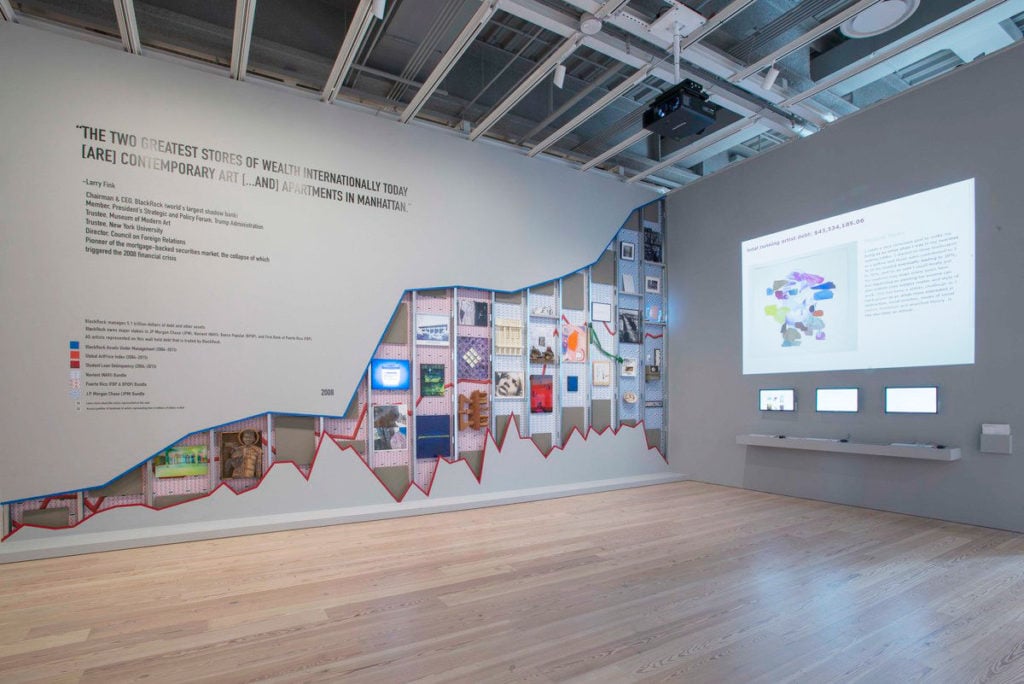
Occupy Museums (founded 2011), Debtfair, 2017. Photography by Bill Orcutt. Courtesy of the artists.
HEAD OF THE CLASS
Many young people today now think the concept of an American “meritocracy” is a joke. What very few people in any age demographic realize is that the concept literally began as satire. In 1958, sociologist Michael Young minted the term in a dystopian, satirical novel about the British class system called The Rise of the Meritocracy, in which future elites use the word to disguise the real, eternal source of the UK’s inequality of opportunity: class.
As we all know, aristocracy is a system in which a person’s odds of lifelong success owe almost entirely to being born to the right parents, i.e. the randomness of the universe. Meritocracy, by supposed contrast, is a system in which a person’s odds of lifelong success owe almost entirely to talent and hard work—a path that usually, if not always, entails access to a high-level education.
The problem, Young points out, is that the pipeline to a high-level education is still too often determined by who can pay tuition. Which of course means that a university system changes little about who gets to succeed in society. So “meritocracy” is just a kind of Santa Claus myth by and for the rich: a matter of inventing a plausible middleman to distract a target audience from the way that wealth is actually being transferred between generations.
Obviously, this societal phenomenon predates Young’s book. But the widespread, straight-faced portrayal of the US as a meritocracy in the decades since has handed plausible deniability to elites anywhere higher education holds sway, including the fine-art economy. And with seats in any incoming university or art-school class becoming scarcer with every passing year, the term’s bastardized meaning only becomes more pernicious and appalling to those who see it for what it is.
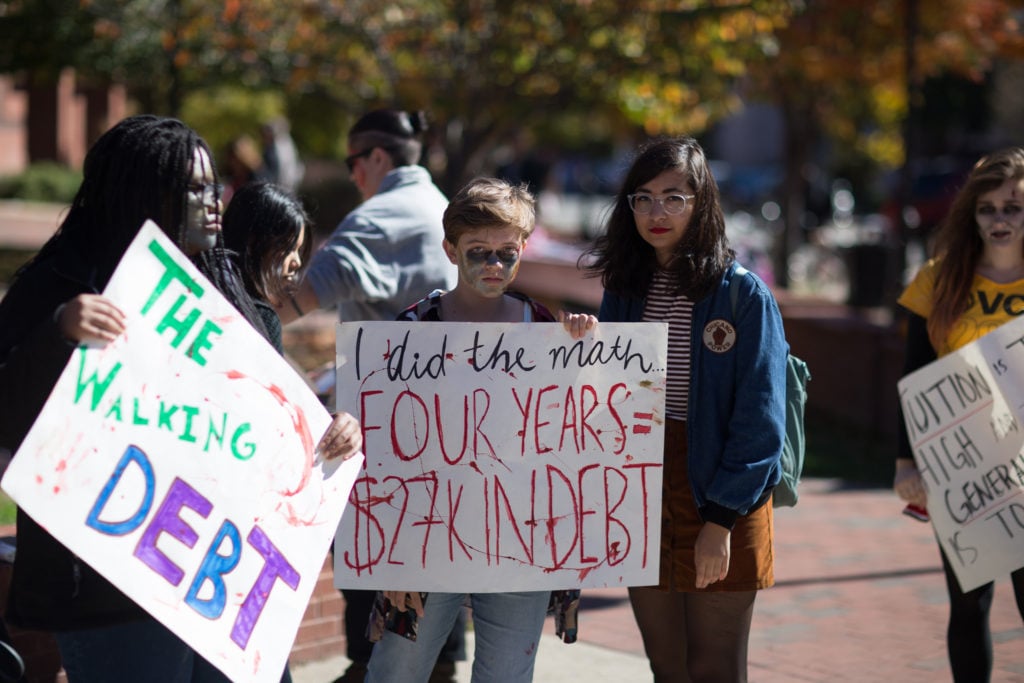
A 2015 student-debt protest. Photography by Tom Woodward. Image courtesy of Flickr.
All of the above converges via an under-maligned figure in the college-admissions debacle. Writer Anand Giridharadas points out that, although Lori Loughlin and Felicity Huffman have grabbed all the headlines because of their TV and film histories, William McGlashan, Jr. represents the most important indictment. (If you’re surprised two women would get positioned as the main ridicule magnets in a gender-inclusive scam, don’t be.) McGlashan matters so much because, for years, he has been one of the most prominent carnival barkers for so-called conscious capitalism, in which plutocrats pledge to use ethical and “impact” investing to “empower the poor, fight inequality, and create opportunities” for the less fortunate.
But while McGlashan was preaching this new gospel of wealth on conference panels and televised interviews, he now stands accused of paying $250,000 to steal his child a spot at the University of Southern California that would otherwise rightfully go to a less fortunate applicant. In that sense, he represents (at least in the abstract) the type of hypocrisy that so much of the art economy stands on: those crafty philanthropists who donate money and works to museums to art-wash the unsavory sources of their fortunes, those unprincipled gallerists who pontificate about having their artists’ best interests at heart to distract from their accounting and business shenanigans, those collectors who throw themselves moral victory parades to hide how much pure speculation is driving their late-coming decisions to acquire works by women and artists of color.
So much of it is about head-faking the world into believing there is no aristocracy—and that, even if there is, we have nothing to fear from our benevolent overlords. But like the ring of fraudsters McGlashan is accused of joining, the scam runs deeper than most of us like to imagine, inside and outside the arts alike. And our schools are the ultimate lesson of that.
[Hyperallergic | The New York Times]
That’s all for this week. Until next time, remember: In the words of Clint Eastwood, “deserve” has got nothing to do with it.
